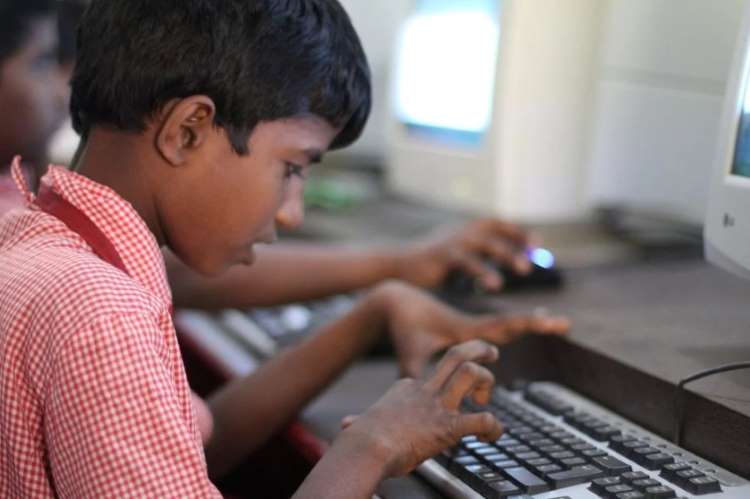Household illiteracy in India: The fight against illiteracy has long been a priority for policymakers in India. Education, often hailed as the cornerstone of progress and empowerment, remains central to India’s vision of inclusive growth and development. However, despite significant strides, the battle against illiteracy continues to pose formidable challenges.
India’s quest for inclusive development is overshadowed by persistent pockets of illiteracy. Despite concerted efforts by the government, non-governmental organisations, and various stakeholders, the problem of illiteracy persists, depriving millions of households of the transformative power of education. As India aims to eliminate this issue and achieve 100% literacy by 2030, it is imperative to assess the situation accurately.
READ I Economic divide: Southern Indian states soar, the East stalls
Household illiteracy in India
Illiteracy perpetuates cycles of poverty, inequality, and social marginalisation, depriving individuals of the opportunity to break free from this vicious cycle. While individual illiteracy in the country has been extensively analysed, we chose to examine a grimmer phenomenon—household illiteracy. A household is considered illiterate if none of its members can read or write in any Indian language. Alarmingly, India is home to a staggering 17.2 million such households, with rural India accounting for approximately 81.8% of the total illiterate households.
In contrast, only 18% of urban households face this challenge, highlighting the persistent gap in educational access between urban ‘India’ and rural ‘Bharat.’ Additionally, a higher percentage of households among Scheduled Tribes (10%) are illiterate compared to other groups. Scheduled Castes (8%) also face significant illiteracy rates, while illiteracy is relatively lower among Other Backward Classes (6%) and the General category (4%). These figures underscore that, despite affirmative action to dismantle caste barriers, many households remain trapped in poverty and deprivation.
Household illiteracy is not a problem unique to India; it is a global challenge that affects millions of families across developing and underdeveloped nations. According to UNESCO, more than 773 million adults worldwide still lack basic literacy skills, with a significant number concentrated in sub-Saharan Africa, South Asia, and parts of the Middle East. These regions face similar structural barriers to education, such as poverty, gender inequality, conflict, and inadequate infrastructure. Addressing household illiteracy on a global scale is crucial for realizing the United Nations’ Sustainable Development Goal of quality education for all by 2030, as literacy is the foundation upon which broader social and economic progress is built.
Low-performing states and regions
India, a union of states with diverse socio-economic landscapes, faces an illiteracy problem that transcends the conventional north-south divide. Uttar Pradesh leads with 2.3 million illiterate households, closely followed by Andhra Pradesh at 2.1 million. Other states with over 1 million illiterate households include Tamil Nadu, Bihar, West Bengal, and Maharashtra. Meanwhile, smaller states like Nagaland, Sikkim, Goa, Manipur, and Arunachal Pradesh appear to have achieved universal household literacy.
However, focusing solely on absolute numbers can be misleading. In terms of the proportion of illiterate households relative to the total population, Andhra Pradesh leads with 15%, followed by Telangana with 11%. Tamil Nadu, Delhi, and Bihar each have approximately 8% of such households. Each region in India has its own unique challenges and opportunities, and addressing illiteracy will require identifying and focusing on low-performing regions.
Of the 88 NSS regions, 10 have more than 10% illiterate households, a concerning statistic. Coastal Andhra and inland Eastern Telangana have the highest proportion, with 17% of households being illiterate. Coastal northern Andhra has 15%, while southern Rajasthan and southern Odisha each have 13%. To achieve universal literacy, India must resolve socio-economic disparities between regions and provide the necessary infrastructure to support literacy.
Illiteracy undermines democracy and nation-building. Ensuring widespread access to education and eliminating illiteracy are essential steps toward creating a more inclusive society in India. Tackling this challenge requires a comprehensive approach to address structural barriers and systemic inequalities. Investments in education infrastructure, teacher training, and curriculum development are crucial.
The New India Literacy Programme, which aims to reach 50 million illiterate individuals aged 15 and above by 2027 through the use of technology and volunteerism to access remote areas, is a positive step. Additionally, the National Education Policy (NEP) 2020, with its five pillars—foundational literacy and numeracy, critical life skills, vocational skills development, basic education, and continuing education—has the potential to break down literacy barriers and empower millions of households to lead more fulfilling lives.
(Dhruv Pratap Singh is a research analyst, and Jyoti Thakur associate fellow at NCAER, New Delhi.)

